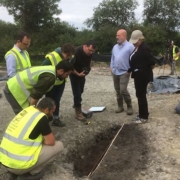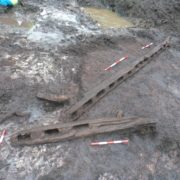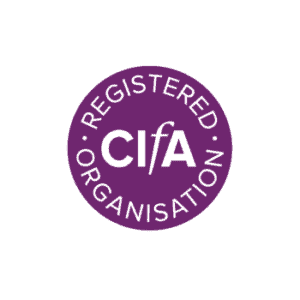Making Medieval Charcoal
At Coolnaleen Lower we found several charcoal-production kilns. Charcoal was an important fuel for metalworking in the past because it can reach the high temperatures (1000°C) needed to smelt both bronze and iron. Charcoal is made by burning wood in an oxygen-controlled environment.
In the past, charcoal was produced in special kilns. Pit kilns were the simplest kind. Wood was stacked in the pit, covered with vegetation and earth to prevent full combustion, and burned over a number of days to make charcoal.
 AMS
AMSThe Archaeology of the Listowel Bypass
Download a poster showcasing some of the archaeological finds from excavations along the N69 Bypass. Alternatively, you can read through a StoryMap of the dig.

Video Documentaries
As part of cataloguing the archaeological works on the N69 Listowel Bypass Project, a set of mini-documentaries were created. Each of these lasts just over 10 minutes.
 AMS
AMSFulachtaí Fia at Listowel
Five burnt mounds, also referred to as fulachtaí fia, were discovered along the route of the bypass. Burnt mounds are the most common prehistoric site type in Ireland.
 AMS
AMSMaking Medieval Charcoal
At Coolnaleen Lower we found several charcoal-production kilns. Charcoal was an important fuel for metalworking in the past.
 AMS
AMSPalaeo-environmental Coring
As part of the archaeological investigations for the N69, palaeoenvironmental specialists Carlos Chique and Karen Molloy from NUIG took a pollen core from Derra West Bog.
 AMS
AMSFrom the Bog
In the townland of Gortcurreen, a group of worked timbers and the remains of a stave-built wooden vessel were discovered within the peat.

An Old House at Curraghatoosane
At Curraghatoosane we found the remains of a traditional thatched house that was occupied from the early nineteenth century until the 1950s.



 AMS
AMS AMS
AMS